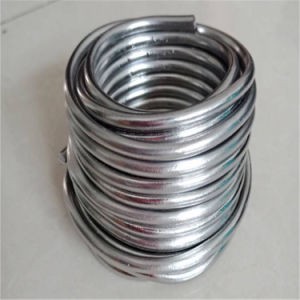Best Good Price Lead Ingot Lead Ingot 99.99 Metal Scrap
Product description
Lead extraction, metallurgy, pyrometallurgy and hydrometallurgy are two kinds of methods, the former is widely used in industrial production. The traditional pyrometallurgy method of lead generally includes three links: lead concentrate sintering and roasting, lead smelting, crude lead pyrorefining or (lead electrolytic refining). The blast furnace reduction smelting method is the most widely used traditional lead smelting method. The lead produced by this method accounts for 85% of the total lead production. Lead smelting by blast furnace reduction smelting method is a method of reducing lead oxide to coarse lead with coke as reducing agent. This method requires first sintering and roasting to convert most of PbS in lead sulfide concentrate into PbO, and then sintering and roasting materials into blocks. The crude lead produced by lead smelting also contains a lot of impurities. It needs to be refined by fire refining or electrolytic refining to obtain refined lead that meets the product quality standards and user requirements, and to recover valuable metals in the crude lead. Fire refining of crude lead plays a leading role in today's lead refining.

Lead is very stable in SO2, it hardly interacts with pure CO2, and the corrosion of ordinary water to lead is very slight. Lead is easy to dissolve in nitric acid, borofluoric acid, silicofluoric acid and acetic acid, but difficult to dissolve in sulfuric acid, hydrochloric acid and hydrofluoric acid at normal temperature. NH4OH solution or dilute NaOH solution with air can slowly dissolve lead. Lead can be dissolved in silver nitrate solution, and other nitrates and chlorides will corrode lead. Sulfates of potassium, sodium, iron, ammonia and potassium carbonate and cyanide solutions have no effect on lead.




Recommended products




